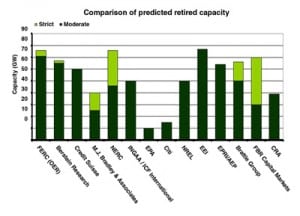Commentary
-
Commentary
Wind Energy: Dealing with Intermittency Challenges
The wind power industry has exploded over the past decade. In the U.S. alone, almost 40,000 MW of wind power have come online since 2000. As more wind generation has been added, grid operators have been challenged to integrate a large amount of intermittent generation. As the state with by far the most installed wind power capacity, Texas has had to face this problem head on.
-
Commentary
Hazard Recognition and Control: Improving Safety’s Bottom Line
The power generation industry is a highly competitive one in which players continue to change and the race for profits is a tough one with the challenge of heavy environmental regulations. One of the most overlooked areas for cost savings is safety. Notwithstanding the moral and legal responsibilities that power plant management has for creating a workplace where everyone can work without injury, reducing and eliminating workplace injuries and illnesses is good for business.
-
Commentary
The Lesson of Procrustes
Procrustes the metal worker—not to be confused with Krusty the Klown—was an important figure in Greek mythology. A son of Poseidon, Procrustes was an iron smith, thief, murderer, and inn keeper. He offered hospitality to strangers passing his place on the sacred byway between Athens and Eleusis. For a price.
-
Commentary
A Renaissance for U.S. Nuclear Power? Not Anytime Soon
In many quarters, nuclear power generates enthusiasm. A single pound of reactor-grade uranium oxide produces as much electricity as 16,000-plus pounds of coal—enough to meet the needs of the average U.S. household for more than one year. And whereas burning coal emits carbon dioxide, sulfur dioxide, and nitrogen oxides, nuclear power generation is virtually emissions […]
-
Commentary
California’s RAM for Small Renewables
With its powerful new renewable portfolio standard, California will boost the market for small renewable technologies. The key is the reverse auction mechanism, which fine-tunes the regulatory regime.
-
Commentary
Power Grid Cybersecurity: How to Achieve Results in an Uncertain Regulatory Environment
Cybersecurity of U.S. electric infrastructure has become a major issue on the national agenda, posing challenges to how we structure, construct, and regulate our power system. This is the first of a two-part article looking at legal and regulatory issues surrounding electric system cybersecurity.
-
Commentary
Recent Blackout Highlights Nation’s Rickety Power Grid
Experts say the cascading blackout that put millions of Westerners in the dark in early September was no surprise: Major power outages have more than doubled in the last decade
-
Commentary
Shaping America’s Energy Policy
America’s energy and environmental policies have been dysfunctional for decades. Obsessively moving toward “green” has made America weaker and has damaged our economy. During POWER’ s first 100 years (1882–1982), the magazine chronicled the U.S. growing into the strongest industrialized economy in the world. America designed and built products for the world using raw materials and energy from within our own borders. Now we are in a recession and the U.S. Environmental Protection Agency’s (EPA) “War on Coal” continues. Does anyone get the connection? Ever-worsening regulations are killing jobs by the thousands.
-
Commentary
Not a Clue
U.S. Environmental Protection Agency (EPA) rules are being processed at a furious pace in 2011. Unexpectedly, the new greenhouse gas and ozone rules were stayed by President Obama. However, it’s the Utility MACT Rule and the Cross-State Air Pollution Rule that leave utilities on unsteady ground. The result has been a number of plant closure announcements that far exceed the magnitude of the coal-fired generation losses predicted by the EPA. The predicted losses vary greatly.
-
Commentary
Is Coal a Fuel of the Future?
Few reasonable people can dispute that the U.S. Environmental Protection Agency (EPA) is conducting a war against coal. If you doubt that conclusion, just look at the large number of new regulations affecting coal-fired power plants that have been proposed in rapid-fire succession by the EPA.

